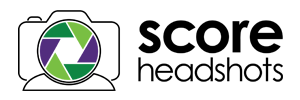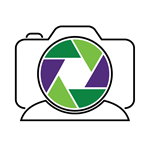Best Practices for Flawless Conference Headshots
Crafting an impactful headshot is crucial in the professional world, serving as your virtual introduction. It offers a glimpse into your character and capabilities, leaving a lasting impression. Whether you're networking, learning, or sharing expertise at a conference, a carefully curated headshot is a potent asset. However, achieving the perfect conference headshot involves more than just posing for the camera and smiling. It requires an understanding of attire, posture, and expression to authentically convey your professional identity. Conference headshots are often delivered quickly, sometimes within 30 seconds of being taken.
With such rapid photo delivery, it's important to note that these photos are typically not retouched. Therefore, it falls on the photographer to ensure flattering lighting to capture everyone at their best. Additionally, there are key considerations regarding attire and grooming that can elevate your headshot for use on platforms like LinkedIn. Professional photographers rely on specific tips and tricks to ensure that your conference headshot truly reflects who you are and what you bring to the professional table.
Things not to do during national conferences
National conferences offer a thrilling opportunity for individuals to reconnect with colleagues, attend workshops, engage in business discussions, acquire new knowledge, and indulge in leisure activities such as pool or beach relaxation (in warm locales), as well as late-night networking events and social gatherings. Our intention is not to dampen the festive spirit but rather to encourage you to make the most of your time at these events.
If you are considering utilizing our professional headshot services, it's important to present yourself at your best. Prior to having your headshot taken, it's advisable to steer clear of unhealthy dietary and drinking choices, as these can impact your skin's appearance and lead to feelings of bloatedness. Maintaining hydration levels and ensuring adequate rest on the first night will contribute to radiant skin and diminish the presence of dark circles under your eyes.
Dress appropriately
Prepare your wardrobe in advance for your upcoming conference, whether you're a local attendee or traveling from afar. Opt for professional attire that suits your industry and avoids busy or distracting patterns. Headshot booths at conferences typically feature neutral backgrounds, so choose solid colors and subtle patterns to ensure your outfit doesn't detract from your face.
Properly fitting attire is crucial for professional headshots, so be sure to iron and hang your clothes upon arrival at your hotel. Since headshots are often unretouched, attention to these small details is important. On the day of your photo, make sure your clothes are wrinkle-free and clean, especially if you tend to perspire easily. Consider changing into your headshot outfit at the last minute if necessary. Keep accessories minimal and understated to complement rather than overshadow your facial features.
Styling and Cosmetics
Make sure your hair is well-groomed and tidy. A new haircut or style can greatly improve your overall appearance. If styling your hair takes a while, consider waking up earlier to allow enough time for it.
It's best to have your headshot taken in the morning when your hair is freshly styled just the way you like it.
When it comes to makeup, aim for a natural and polished look. Your professional headshot should accurately reflect who you are. If you usually wear light makeup, don't overdo it for your headshots. Ensure that your skin isn't shiny and avoid using highlighter or any makeup that creates a shiny appearance. Bring lip gloss with you and apply it just before your headshot session.
Waiting in line at the tradeshow Headshot Booth
Given the high demand for complimentary headshots at most headshot booths, it's important not to be discouraged by long lines. Instead, use the waiting time to prepare yourself by fixing your hair and makeup. Consider how you want your hair styled and whether you prefer it up or down, as well as which side you prefer it parted on. It's beneficial to observe the photographer's interactions with others in front of the camera and take note of their posing techniques. This will help you feel more at ease when it's your turn, allowing you to anticipate what to expect and make informed decisions about your posture and hand placement. Maintaining a professional tone throughout this process is essential.
How to Pose, men vs women
An experienced headshot photographer will provide guidance for capturing professional headshots. To ensure a natural and confident appearance in front of the camera, consider the following tips:
Maintain good posture by imagining a string pulling you from the top of your head.
Avoid leaning forward and gently bring your forehead towards the camera while lowering your chin to prevent double chins.
Keep your hands at your sides to maintain a strong body form, avoiding placing them on your hips. Embrace subtle movements and adjustments while being receptive to the photographer's direction.
Aim to capture a variety of expressions, including both smiling and serious looks, with particular emphasis on creating tension in the eyes and mouth.
Always maintain eye contact with the lens for a relatable and engaging appearance in professional settings such as LinkedIn. Remember that achieving the perfect conference headshot goes beyond traditional glamour shots, aiming to establish genuine connections with viewers.

